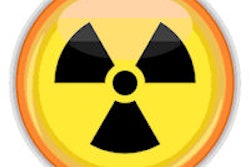
Automated tube current selection reduced dose significantly in CT scans acquired at dozens of centers worldwide, according to the results of a large international study published in Radiology.
The study included more than 160,000 scans acquired over a two-week period at 86 centers around the world. On average, radiation dose was nearly 15% lower when automated tube voltage selection (ATVS) was used to select the tube current voltage. Savings in some exams reached 50% or more, although a small number of studies actually showed dose increases.
Temporal bone, peripheral runoff CT angiography, and most contrast-enhanced exams were the top dose savers, wrote the authors from the Medical University of South Carolina, Ludwig Maximilians University in Munich, and Sapienza University of Rome (Radiology, October 16, 2015).
Results of the observational study show that ATVS significantly reduces radiation exposure for most CT applications across all body regions.
"The ability to validate nearly across-the-board reductions in dose using a single, simplifying change to the workflow in hundreds of thousands of CTs worldwide represents a substantial benefit to patients undergoing CT," wrote lead author James Spearman in an email to AuntMinnie.com.
Automated judgments on voltage, current
Automated tube current selection algorithms have been developed to address the complexities of determining the best combination of tube voltage and current. They work by integrating the patent's attenuation profile based on a scout image with information on the scan target to select the combination of tube voltage and current that will yield the desired contrast-to-noise ratio with the lowest dose, the authors wrote.
Owing to enhanced iodine contrast at low photon energies, dose reductions are generally greater in contrast-enhanced exams.
The study analyzed 164,323 unique CT exams after they were collected and transmitted to the CT scanner manufacturer (Siemens Healthcare) during two five-week periods immediately before and after implementation of automated tube voltage selection at each site. The researchers compared tube voltage and CT dose index volume (CTDIvol) between exams performed before and after ATVS was installed.
CTDIvol was 14.7% lower across all types of CT exams and body regions when automated tube voltage selection was used, compared with exams without it. The use of ATVS reduced radiation exposure substantially in nearly all exams, the researchers noted.
Dose reductions were largest in head exams; for example, there was a 56.1% dose reduction in temporal bone CT, a 48.6% reduction in peripheral runoff CT angiography, a 39.6% reduction in the paranasal sinus, and a 23.9% reduction in head CT.
| Radiation dose before and after ATVS implementation | |||
| Exam | CTDIvol without ATVS | CTDIvol with ATVS | Overall % change |
| Head CT | 53.1 | 40.4 | -23.9 |
| Paranasal sinus CT | 15.9 | 9.6 | -39.6 |
| Temporal bone CT | 69.5 | 30.5 | -56.1 |
| Peripheral runoff CT angiography | 7.0 | 3.6 | -48.6 |
| CT pulmonary angiography | 12.4 | 12.0 | -3.2 |
| Renal stone CT protocol | 16.4 | 20.7 | 26.2 |
| CT colonography | 10.6 | 10.8 | 1.9 |
| Lumbar spine CT | 22.6 | 24.1 | 6.6 |
Owing to these large reductions, the use of automated tube voltage selection should be encouraged for most CT applications, according to the authors. Nevertheless, ATVS is unsuitable for those few applications in which radiation dose actually increased after it was implemented, such as for renal stone protocols and spine CT.
Also of note, after ATVS implementation, the algorithm was used in only 35.2% of exams, leaving almost two-thirds of exams performed without it, they wrote.
Dose cuts depend on 'typical' settings
The authors noted that changes in radiation dose are inextricably linked to the typical tube current settings already in use. As a result, for exams in which radiologists have already optimized those settings, dose reductions were likely to be smaller.
"It's interesting that the results weren't more evenly distributed." Spearman told AuntMinnie.com. "For example, head CT exams appeared to get much lower doses with ATVS than without -- due largely to the fact that the typical tube current settings were high."
On the other hand, radiologists seemed to be aware of the need to reduce tube current settings preemptively in exams such as CT pulmonary angiography, where dose savings with ATVS were insignificant because most exams are already acquired at 80 kV.
Broad-based reductions are better
However, automated tube voltage selection does have advantages in that it offers dose reduction more or less across the board, while individual protocols are optimized one at a time, according to Spearman.
"One of the limitations of nonsystemic approaches to dose reduction is that they occur only within the subspecialty being investigated," he said. "ATVS provides a systemic approach to dose reduction, allowing for improvements that may not have been individually investigated or where the latest research may not have reached standard of care."
The fundamental benefit of ATVS is that it sets a threshold based on the individual patient, not a generalized guideline, Spearman added.
"Our lab has previously demonstrated that variation in body habitus, whether due to body mass index, sex, or body shape, can vary widely," he said. "This requires manual dose selection algorithms that are either too complex to be practical or too simple to be effective. ATVS takes the guesswork out of the process by providing individualized tube voltage selection while simplifying the workflow."
It's not possible to say that any specific protocol -- for example, a renal stone scan -- is typically set too high or low without a detailed evaluation that includes an analysis of image equality, he added. In that regard, the study highlights further opportunities for research.
"With studies on this scale, we have to be selective in what we evaluate to reduce the potential for confounding factors," Spearman told AuntMinnie.com. "This is an area of great interest to our lab, and we continue to build similar datasets including dose, image quality, and patient variables."



















